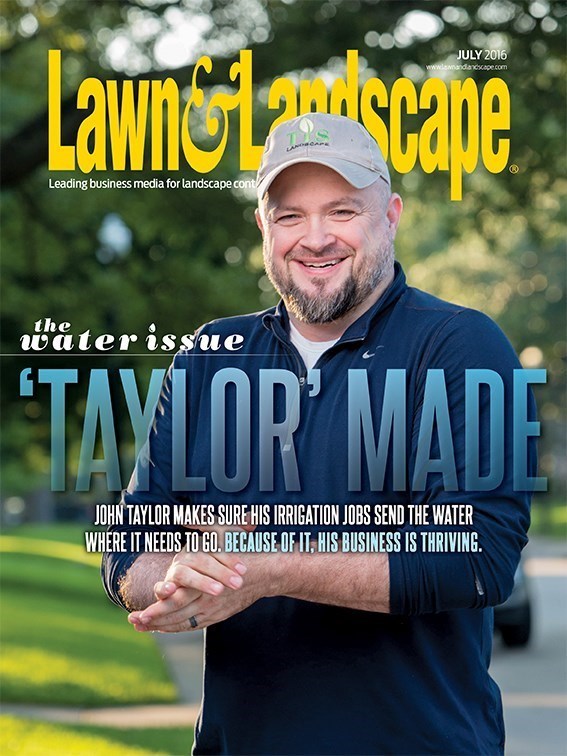
Restoration of streams, rivers and wetlands can be a lucrative area of work for landscapers.
“There are a lot of opportunities in this field because it’s a niche market and there’s not a lot of contractors that are good at it,” says Mark Bradley, chief executive officer of TBG Environmental, an environmental construction and rehabilitation company located just outside of Toronto.
The company’s past projects include rebuilding creeks and rivers damaged by storms, restoring shorelines lost due to erosion or flooding, relocating of bodies of water and creating natural embankments to prevent future erosion.
TBG Environmental was added in 2012 as a division of TBG Landscape, Bradley’s landscape design and management company, which was founded in 1997. The company’s annual revenue is $55 million and 240 individuals are employed.
The company uses products such as rocks, gravel, sand, and native soil and vegetation. Unlike traditional landscape work, there is little to no maintenance involved, Bradley says.
“We’re trying to recreate a wild environment. Within three years, it would be hard to tell that anybody was ever there.”
Here are some of Bradley’s tips for performing wetland restoration:
1) Gather equipment and necessary manpower.
Wetland restoration work is heavy on equipment and low on manpower, Bradley says. “The projects involve larger volumes of stone and boulders to recreate shorelines and install erosion control systems to prevent washouts on stream banks – everything from compact skid-steer loaders with tracks to small excavators.”
The duration of each project can vary tremendously. The company has done small bank treatments and projects that last only a week, but it has also done larger projects like a flood protection landform in Toronto that took three years.
Most crews consist of four or five people. “For the last few days of a project, typically we have a larger group of staff on site doing restoration planting and seeding,” Bradley says.
2) Be aware of possible challenges.
Engineers usually provide drawings with specifications on the work to be done and the types of stone to use. However, some knowledge about the environment and the needs of native animals is important.
“If we’re working in an area where there’s granite, then we’d only use granite in the river,” he says. “If it was a limestone river, then we would use limestone. You don’t want to ever introduce different stone into a river because you’ll change the water chemistry.”
Other challenges include re-directing water and pumping it off site to allow construction access. “We build a road with these swamp mats to allow the heavy equipment to drive out into the wetland,” Bradley says. “We have special dams we can deploy inside of a river to allow us to pump the water from behind the dam back into the river. We can dry out one side of the river to allow us to install stone and rebuild the shoreline.”
3) Invest in training and staff.
Some specialized staff is helpful in this line of work, Bradley says. “We hire a lot of just environmental technologists. Horticulturalists are very good to have on staff to recreate the habitat once the construction aspect of the job is complete,” he says, adding that skilled heavy equipment operators are also essential.
“It’s important to have a good surveyor on staff to check the grades and the layout because you’re working with water.
It’s important you have all the grading perfect so that everything drains and dissipates according to the engineer’s drawings.”
Landscape technicians can also learn the skills to do this job. “A lot of it’s experience-based. If you have education in a related field, it can be easily applied to this type of work,” he says.
4) Start out with small jobs.
Bradley’s company grew to offer environmental restoration work after providing the service for residential clients living on large estates, some of which were close to shorelines and bodies of water.
“Customers needed sort of an expert to get the permits and do the drawings and hire the appropriate engineers to fulfill the requirements of the permit process,” he says.
“We found ourselves doing more and more of that work in the private sector.”

Today, TBG Environmental partners with many conservation and preservation groups.
“Start small, taking on smaller contracts with the municipalities, cities and towns,” Bradley says. “Then as you get more experience, you can take larger projects on.”
5) Know your man-hours.
In terms of profit, Bradley says it’s helpful to think in terms of man-hour rates, which are much higher for wetland restoration work than for landscaping work.
“The revenue per man-hour on this type of work tends to be in the $300 to $350 per man-hour range, whereas typical landscape construction work is about $100 per man-hour. It’s much higher revenue for each hour that the staff works,” Bradley says.
Bradley says his gross profit is about 40 percent, but can vary, depending on overhead.

Explore the July 2016 Issue
Check out more from this issue and find your next story to read.




